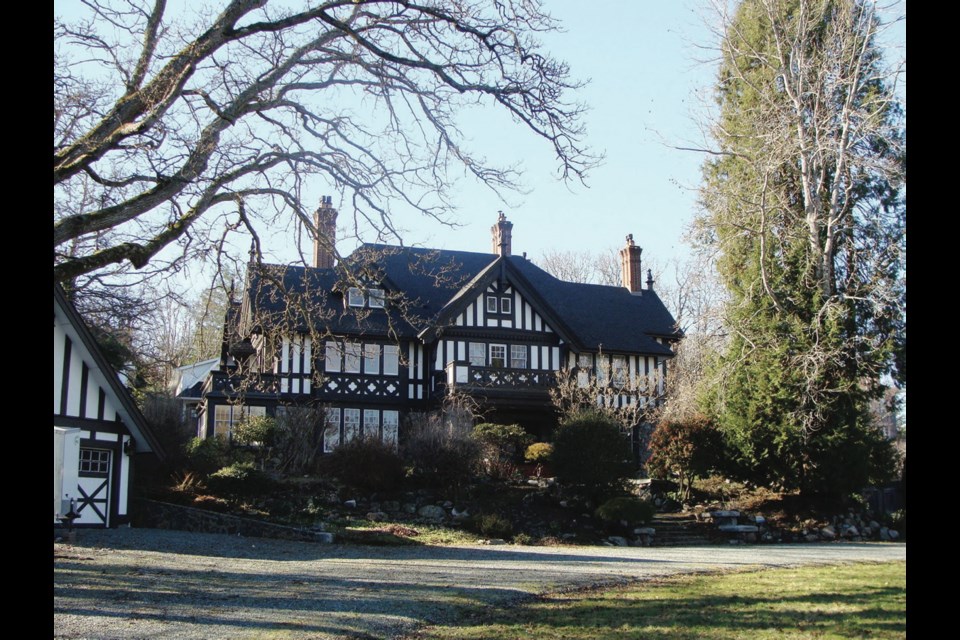 In Victoria, our favourite local pastime seems to be looking at other people’s houses. Some of the best of them were designed by Samuel Maclure (1860-1929), and his vision of Victoria continues to be pervasive. He built more than 80 houses here, and a surprising number are still with us, establishing a “look” that continues to define our city.
In Victoria, our favourite local pastime seems to be looking at other people’s houses. Some of the best of them were designed by Samuel Maclure (1860-1929), and his vision of Victoria continues to be pervasive. He built more than 80 houses here, and a surprising number are still with us, establishing a “look” that continues to define our city.
Maclure was born in 1860 at the Royal Engineer’s Camp at Sapperton, New Westminster. His father, John Maclure, was a Scot and a surveyor, who came to British Columbia in 1858 with Colonel Moody’s advance brigade to measure the new colony. His work surveying the New Westminster-Barkerville telegraph route began the family’s long association with telegraphy, and their home on the Matsqui plain became a telegraph station. Many of the children — including Sam — became professional telegraph operators.
Young Sam’s education was slight, beginning at age 11 at a private school in Victoria, where he was rarely without a sketchbook in hand. Later, he enhanced the telegraph stations where he was posted with attractive plantings and flower boxes. At the age of 24 he was able to spend a year at art school in Philadelphia to broaden his horizons. After a brief look at New York, Boston and Chicago, he returned home determined to practise architecture.
In Victoria, he first offered his services as an art teacher, and worked as a telegraph operator. There met Margaret Simpson, known as Daisy, step-daughter of a local clergyman. He proposed marriage, but her family refused him — he was 28 and she was 18. So he returned to New Westminster and opened his first architectural practice. When he received his first commission, for the new public hospital, Margaret slipped away from her home in disguise and married him in Vancouver.
After the birth of their first child two years later, the young family were reconciled with her parents and returned to Victoria. Here Maclure created the Temple Building (1893), which still graces the corner of Fort and Langley streets. A brick building with arched window openings and terracotta details, it owes something to the Chicago style of Louis Sullivan. Maclure was just one of the architects with offices in the nearby Five Sisters Block, where Francis Rattenbury was at work on the new Parliament Buildings, and T.C. Sorby and Thomas Hooper also had busy practices.
Maclure loved to paint watercolour landscapes, and often went sketching with the men and women who soon formed the Island Arts and Crafts Society. His wife Margaret began to paint portraits of the native women of Victoria, and was quite musical.
Together, they mixed with the top level of Victoria society. The women who had time for sketching with Maclure were often the ones actively involved in the design of the new homes they were building on the Rockland hillside, along Foul Bay Road and at the new subdivision along Oak Bay.
Working on spacious sites, with splendid views and abundant local materials, Maclure cultivated a clientele that shared his interest in the “arts and crafts” esthetic: close to nature, hand-made and nostalgic about a pre-industrial past. At first he was inspired by the colonial bungalows with deep verandahs and bell-cast rooflines seen in the Raj in India. The Gore house (1005 Belmont Ave.) and the Lamb house (2450 Windsor Rd.) are exquisite examples.
Then, inspired by the mountains and vistas of the West Coast, Maclure followed American examples of Tyrolean originals to take up a “chalet” style, with a bracketed second-story balcony below a wide, overhanging roof and rustic woodwork trim. Rugged stone bases and shingled walls are part of that effect.
The late 19th century saw a romantic return to old English styles, and Victoria took avidly to the mock-Tudor “Elizabethan Revival.” For larger homes Maclure drew from a repertoire of effects: “half-timbered” and shingled wall treatments, lots of gables, ribbed brick chimneys and mullioned leaded glass. Everywhere one looks in Rockland, another stately Maclure mansion holds its ground. The Biggerstaff Wilson house (1905) at 1770 Rockland Ave. is a prime example.
The arts and crafts esthetic was seen up close, in the interiors that were an essential part of Maclure’s expression. Typically, one enters a grand, spacious central hall. It is wood-panelled, surrounded by a staircase leading up to a gallery at the second floor level, and graced at the end with a large stained-glass window. Of course, a fireplace-and-mantlepiece ensemble of brick, stone, tile and metal is the focus of this great hall. And hanging nearby, a tasteful little Maclure watercolour of the Olympic Mountains.
There were bigger projects. He worked with Rattenbury on Government House in his early days, and his Vancouver office built huge mansions there in the same vernacular, with all the half-timbered, hand-carved detail that money could buy. In 1908, James Dunsmuir, son of the profoundly wealthy Victoria family, commissioned a rustic retreat called Hatley Castle at Esquimalt Lagoon, now Royal Roads University. The gardens there — Italian and Japanese — are another part of Maclure’s vision. He also was instrumental in the design and development of Butchart Gardens.
Maclure designed more than 80 houses in Victoria, most of which still stand. And his vision continues to affect builders, even today. The subtly romantic theme he introduced into our built environment is all around us.
You can discover Maclure’s projects in many books on local architecture, most recently Nick Russell’s Glorious Victorian Homes (TouchWood Editions, Victoria, 2016). Martin Segger wrote the indispensable book (Sono Nis Press, 1986) and its title says it all: The Buildings of Samuel Maclure: In Search of Appropriate Form.



